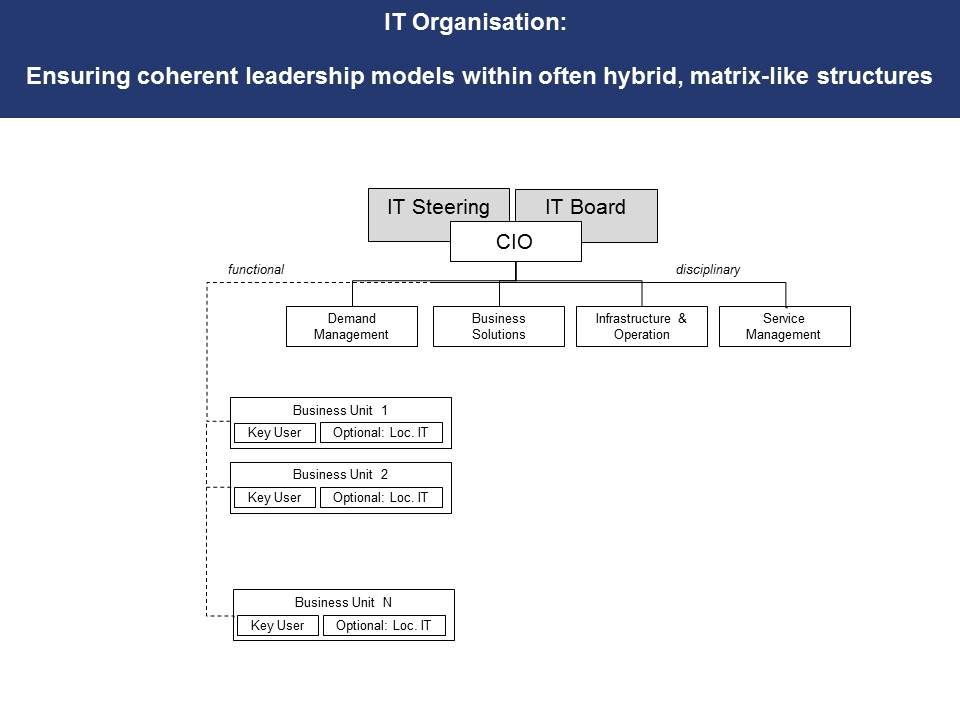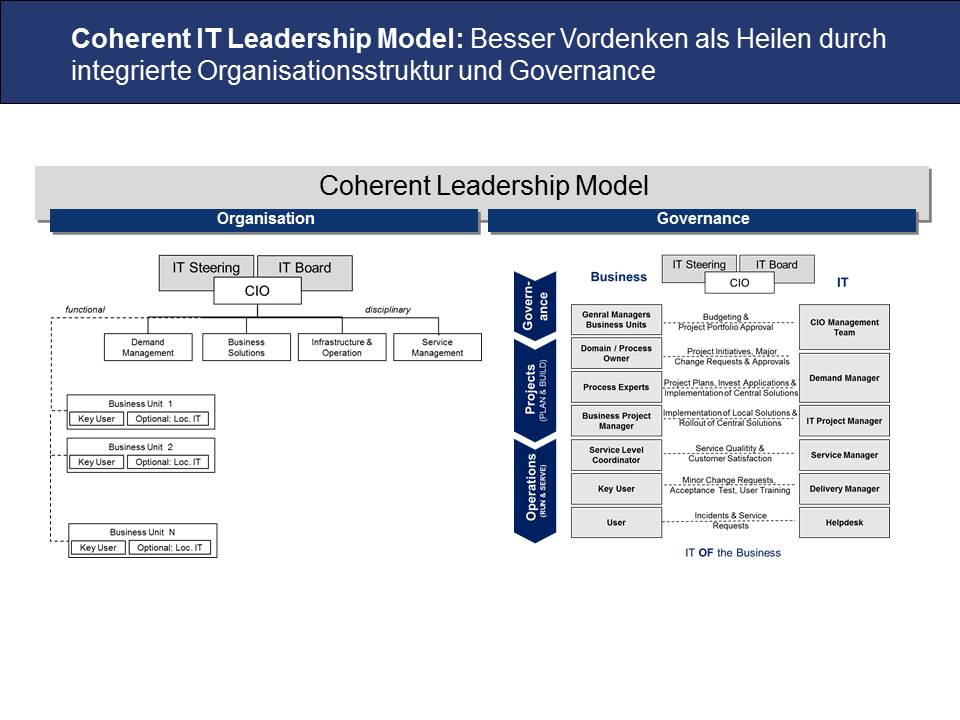Is your Information Management effective?
A seamless leadership model for information management (IM) is important to the business and at the same time hard to be achieved because of the internal service nature of IM. Innovation, complexity avoidance and compliance all to often suffer under central/decentral questions of responsibility. Gaps within the resulting leadership model get often only apparent within challenging transformation projects where effective leadership would be urgently needed.
Thus, for instance, the merits of tremendous efforts associated with the roll out of a global, standard ERP get often diluted by insufficient governing of change requests within the service lifecycle thereafter
Or in another example, an organisation introduced over years an IT service management standard centrally without involvement of local IT groups within business units, countries and sites. Thus a qualitative end-to-end service was wishful thinking. The responsibilities for services and processes were not clearly allocated and a common process management system/governance was missing as basis for common operations, performance management and understanding.
Are such critical mistakes not avoidable? Is prevention by coherent leadership not better than later expensive restructuring?
The dp 5 step approach ensures organisational development and governance reflection to achieve a coherent leadership model:
1) Clarification of strategic business objectives to IM:‚Structure follows Strategy‘, hence the targets for IM are to be defined in alignment to the business strategy and the comprehensive decision environment needs to be understood before the right structural IM option is to be chosen.
2) Development of an appropriate structrue: How much central coordnation is necessary and how much decentral flexibility is desireable? Here, the right operating point between 'hard-wired' structures and 'softer programmed' governance has to be determined.
3) Identification of structural gaps for decision demand and required regulations: After structural decisions it is now important to identify all gaps for ensuring legal compliance and for achieveing the strategic objectives which couldn't be closed with the chosen model at the same time.
4) Development of the detailed, complementary governance framework:Wiith the now well-kown governance requirements, the governance model and mechanisms can be developed.
5) Coherence check of structure and governance


